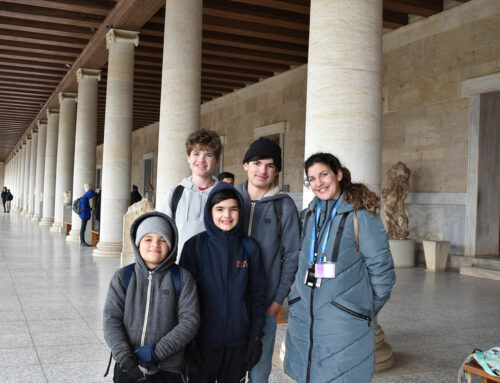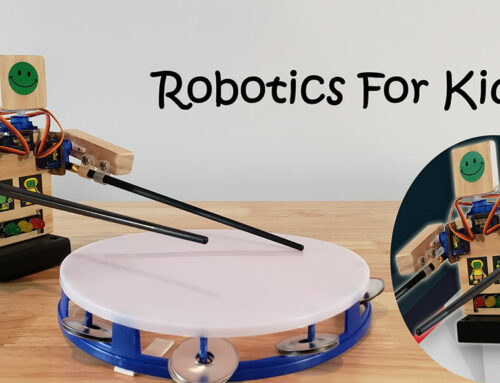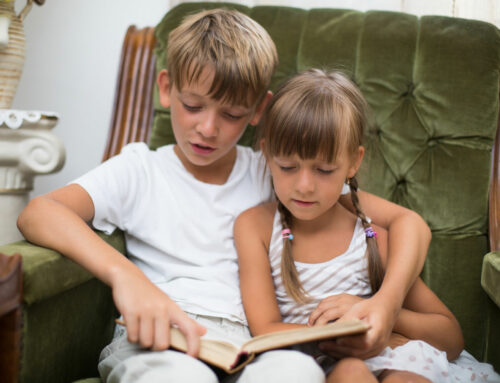Preparing to homeschool 2nd grade? It’s an exciting time for you and your child! We’ve compiled everything you need to get you started and keep you on track for homeschooling this year. Competencies, developmental milestones, field trip ideas, and more are included below!
By age seven, most children are:
- able to communicate effectively using complex sentences
- able to pay attention to a topic that interests them for 30 to 45 minutes
- able to zip zippers, fasten buttons, and tie their shoes with ease (giving both of you a little more independence).
Homeschooling curriculum in the state of Texas must include the five basic subjects of reading, spelling, grammar, mathematics and good citizenship. Science, history and social studies are included below for you.
Not residing in Texas? Check out state requirements for homeschooling second grade in your state.
Read ahead:
Suggested 2nd Grade School Supplies
- Pencils
- Pencil sharpener
- Lined paper or spiral notebooks
- Binders
- Crayons and colored pencils
- Paints (tempera and watercolor)
- Paintbrushes
- Paper for painting
- Construction paper
- Whiteboard
- Dry erase markers
- Ruler
- Children’s scissors (blunt tip)
- Glue sticks
- White glue
- Tape
- Math manipulatives
- Sight word flashcards
- Globe
- Wall maps of the world and the United States
- Library card (for both you and your child).
Homeschool 2nd Grade Grammar, Reading, Spelling and Language Arts
- Able to read the 200 most commonly used words in the English language, including there, have, that, is, the, a, and in.
- Reading comprehension improves.
- Begins to “read to learn” instead of “learn to read.”
- Learns new vocabulary through reading.
- Uses words to talk through problems.
- Starts playing with words to make puns.
- Understands and tells jokes and riddles.
- Picks out nouns and action words in sentences.
- Uses phonetic strategies when reading and writing, sounding out words that are unfamiliar.
- Begins to break down unfamiliar words into smaller parts by looking for patterns he’s seen before—such as “anti” or “dis”—to figure out the meaning.
- Paraphrases information they have read.
- Explains the problem, solution, or main idea in fiction and nonfiction literature.
- Reads and understands stories, poems, plays, directories, newspapers, charts, and diagrams.
2nd Grade Writing Skills
- Writes sentences using correct punctuation and capitalization.
- Writes about her own ideas.
- Revises writing to make it clearer.
- Is able to write the different types of sentences: declarative (“That apple is red.”), interrogative (“Can my friend come over after school?”) and exclamatory (“I love homeschooling!”).
- Writes to express feelings, tell stories and summarize information.
2nd Grade History and Social Studies
- Able to explain the significance of various community, state, and national celebrations such as Veterans Day, Memorial Day, Independence Day, and Thanksgiving.
- Able to identify and explain the significance of various community, state, and national landmarks such as monuments and government buildings.
- Is familiar with the history and important figures of your local community.
- Develops a sense of time and chronology and is able to describe a series of events with words including historical, present, past, and future.
- Able to create and interpret timelines for events in the past and present.
2nd Grade Math
- Understands cause and effect to make more in-depth math connections (for example, if 6 + 2 = 8, then 8 ‒ 6 = 2).
- May be able to use those connections to do more complex math (such as multiplication and division).
- Successfully adds and subtracts two-digit numerals.
- Recognizes and knows the value of coins.
- Relates math to other subjects such as science (measurements and graphs) and social studies (tables and maps).
- Able to use a ruler to measure the length of an object to the nearest inch or centimeter.
- Can estimate numbers.
- Measures the length of an object with a “non-standard” object. For example, a baseball bat is four cereal boxes long.
- Able to tell time to the nearest quarter-hour.
2nd Grade Science
- Observes the basic characteristics of objects including size, shape, color, texture, sound, position, etc.
- Classifies objects into groups according to observations.
- Conducts a simple investigation by asking questions and using instruments such as a magnifying glass, thermometer and weight scale to gather information.
- Understands and is able to explain the basic needs of animals, including shelter, water, and food.
- Able to group animals based on their habitats and similarities. For example, birds live in nests, fish have gills.
- Understands the concept of life cycles, including birth, developing from childhood to adulthood, reproducing, and eventually dying.
- Understands the concept of seasons and the weather changes from day to day.
- Explains components of weather such as temperature, wind, rain, sleet, snow, and hail.
- Uses a thermometer to read the temperature.
- Understands the difference between solids, liquids, and gas, and that these materials can change from one state to another (Examples: the water cycle).
- Understands the impact of science and technology on our past, present, and future.
2nd Grade Good Citizenship
Even when homeschooling 2nd grade it’s important to teach good citizenship. Being a good citizen not only means understanding your right to vote and the privileges of citizenship, but also respect for our planet, good stewardship, and understanding the world around us. If you are in need of resources and lesson plans to fulfill this requirement, consider joining THSC. We offer our “Lone Star Study” guide as a free download for our members.
Here are a few ideas:
- Learn about the electoral process in local, state, and national elections.
- Become involved in events and initiatives (such as Capitol Days, sponsored by THSC).
- Volunteer at a local food pantry, local animal shelter, or other organization (many places allow younger children to participate with a parent).
- Attend rallies of causes you believe in as a family.
- Attend city council meetings and discover the workings of your town.
- Register to vote and vote! Take your child with you to see the process. Children under the age of 18 are allowed to go with you and even go inside the booth with you in every state in the United States.
- Keep our state clean by picking up litter.
- Learn about recycling, where and how you recycle items in your community.
- Discover Americans who exemplify good citizenship such as Paul Revere, Abigail Adams, World War II Women Airforce Service Pilots (WASPs), Navajo Code Talkers, and Sojourner Truth.
- How is your town significant in Texas history? Find out! Visit the local library or chat with a local historian.
Developmental Milestones for Seven-Year-Olds
All children develop at different rates. However, certain skills are easily identified by the age of seven. If you have concerns about your child’s development after reviewing this list, please discuss those with your healthcare provider.
2nd Grade Gross Motor Skills
- Able to play, run and be active for longer periods of time without getting tired.
- Rides a two-wheel bicycle unassisted.
- Ready and able to learn sports involving good physical control.
- Coordinates movements to do things like following a dance routine.
2nd Grade Fine Motor Skills
- Uses the small muscles in her hands successfully, is able to hold a pencil correctly, and form letters accurately.
- Improvement in sports skills (such as catching a small ball).
- Able to tie shoes, fasten buttons, and zip zippers without help.
- May begin to type fairly quickly on a keyboard.
2nd Grade Speech and Emotional Development
- Enjoys being part of a team, group, or club.
- Uses complex sentences and different types of sentences to express ideas clearly.
- More easily influenced by peers.
- Enjoys sharing secrets and jokes with friends.
- Experiences periods of dramatic emotions and impatience (feeling that everyone is against him) and then bounce right back to everything being just fine.
- Begins to see things from other people’s points of view.
- More aware of others’ perceptions of them.
- Tests out “bad” words for shock value.
- Pronounces letter sounds correct and no longer substitutes “w” for “r” when speaking.
- Still lacks attention at times to following directions.
10 Great 2nd Grade Books or Series
Find these books at your local library or find them at any bookstore. If you shop on Amazon, please visit Amazon Smile and choose Texas Home School Coalition as your charity of choice!
We also recommend checking with a site such as Redeemed Reader or Plugged-In as to the appropriateness of any particular book for your child and their personal maturity level.
Another wonderful place for book recommendations is The Read-Aloud Revival, which features booklists and reviews for all kinds of books and reading levels.
- Gooney Bird Greene: series written by Lois Lowry and illustrated by Middy Thomas introduces us to Goonie Bird and her “only absolutely true” stories. Your young reader will be intrigued by Goonie Bird’s storytelling and he will learn he has a story of his own to tell too.
- Frog and Toad are Friends: Arnold Lobel shares the story of two friends standing together through life’s ups and downs.
- Cam Jansen: series by David A. Adler and Susanna Natti (illustrator) bring to life Cam and her best friend Eric, two fifth graders who solve the mystery every time.
- The Chocolate Touch: by Patrick Skene Catling (with pictures by Margot Apple) has been a favorite for generations. As the subtitle says, “John Midas was crazy about chocolate. But this was too much of a good thing.”
- Flat Stanley: Since 1964, Flat Stanley and his fun adventures have thrilled the imaginations of children. You may have seen or been a part of a Flat Stanley challenge based on this series by Jeff Brown with pictures by Scott Nash.
- Nonfiction books by Gail Gibbons: tornadoes, hurricanes and other weather-related titles are available from this “master of children’s nonfiction.”
- “Ordinary People Change the World” series: Titles include I am Neil Armstrong, I am Lucille Ball, and I am Gandhi. This biography series by Brad Meltzer brings the lives and events of well-known people to the page with creative illustrations by Christopher Eliopoulos.
- Henry Huggins: First in a classic series about a kind-hearted boy and his lovable friends in late ’50s middle America.
- Charlotte’s Web: Author E.B. White’s heartwarming classic about the friendship between a little girl, a selfless spider and “the world’s greatest pig.”
- Mr. Popper’s Penguins: A classic, absolutely impossible tall tale about penguins jumping into the lives of a family. It will win your child’s heart — and maybe yours, too!
Here are a few great options:
- National Geographic Kids (ages six and up)
- Highlights (ages six to 12)
- Sports Illustrated Kids (ages six to 18)
- Spider (ages 6 to 9).
10 Awesome Field Trip Ideas for 2nd Grade
Everyone loves a field trip! Many places and people are open to tours to educate youth. Just ask! Don’t feel you have to leave your town or your own neighborhood to enjoy a successful field trip. Be creative, and your next excursion down the street can be an educational experience.
- First Responder Appreciation: Police, fire and EMS stations are located throughout most cities. Locate the one closest to your house and make a connection. Tour a fire station, talk to a police officer or reach out to an emergency medical technician and find out what it truly means to be a first responder.
- Government: THSC Capitol Days are one-day, hands-on events that allow homeschooling families to fully participate in the state legislative process. These events give the opportunity to defend the rights of homeschool families in Texas, meet representatives and staff and actually help pass a law. A free grade-specific tour is also available at our Texas state capitol (which includes history, architecture and the legislative process).
- Job Fair: Visit a farm, watch a lawyer in court, chat with a pastor/priest or cook alongside a chef. Most professionals are quick to assist. Ask around! Plumbers, actors, doctors and more are available to show you the ins and outs of their careers.
- Historical Sites: Why is your town important in the story of Texas? Check with a local historian or county historical society to find out!
- Museums: The National Cowgirl Museum and Hall of Fame in Fort Worth “honors and celebrates women, past and present, whose lives exemplify the courage, resilience, and independence that helped shape the American West, and fosters an appreciation of the ideals and spirit of self-reliance they inspire.”
- Sports: From the Texas Sports Hall of Fame in Waco to a tour of the Dallas Cowboys AT&T Stadium, your sports fan has plenty of opportunities to learn not only the history of a sport, but also the science behind it, too!
- Libraries: As a homeschooling family, the local library tends to be our home away from home. How does a library work? Chat with the children’s or reference librarian(s) to discover the inner workings of a place you see often (and tour it, if tours are available). Most libraries offer summer programs as well as events during spring break. Take advantage of free programs and educational opportunities held throughout the year.
- Theater/Music/Art: Get front-row seats for a theater performance or grab a blanket and head to a free outdoor concert. Stroll through a sculpture garden. Music, art, and theater will open your child’s mind to other worlds and experiences. Many communities offer children’s theater groups. Maybe it’s time for your second grader to be the star of the show!
- Get Outside: Walk around the zoo and discuss the different types of animals, birds and reptiles represented while discussing wildlife conservation, hike in a state park, or visit the Port Isabel Lighthouse state historic site, the only open-to-the-public lighthouse in our state. Want to stay close to home? Tour your backyard searching for insects, visit a pond and count the diverse wildlife, or take a stroll through your neighborhood. Simply walking around and noticing nature opens up a world of insights and conversations with your seven year old.
- Living History
- Ring the church bell at the Governor Bill and Vara Daniel Historic Village in Waco. These nine wood frame structures were relocated from Liberty, Texas and now sit alongside the banks of the Brazos River as part of the Mayborn Museum Complex, which was donated to Baylor University in 1985 by the Daniel family. A schoolhouse complete with blackboard and primers, a church, a law office, and more dot the property (recreating a community during the 1890s). An audio tour is provided! Special events take place throughout the year.
- Head to the Texas Hill Country for the Pioneer Museum in Fredericksburg, offering hands-on classes, presentations and workshops that keep the craftsmanship, allure and heirloom skills of our past available for your family to learn today.
4 Homeschool 2nd Grade Resources
We believe that raising children is a family’s God-given right and calling, which is why we support families with encouragement and practical resources like you found in this article. Did you find this resource helpful? There’s a lot more where this came from! Sign up to receive our free resource-packed digital publications.



